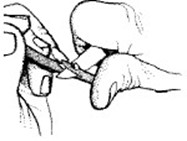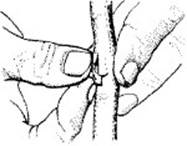CROP PRODUCTION
CROP PROTECTION
Meaning: This is the process of preventing crop losses due to insects, rodents, weeds, plant nematodes and plant diseases, caused fungi, viruses, bacteria etc.
Objective:
The main objective of crop protection is to provide conditions that will enable crops to grow without their enemies, which reduce crop yields and indirectly reduce food supply and farmers income.
PESTS
It is an organism which damage crops either in the field (Field pest) or in stores (storage pests) The pests include
o Insects
o Mites
o Nematodes
o Birds
o Vermines
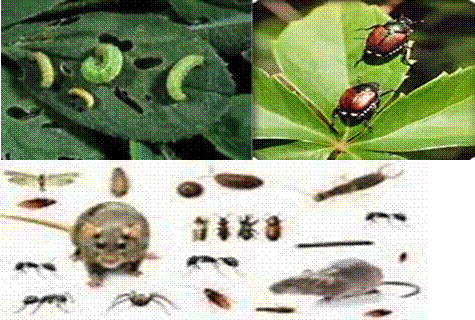
The substance or compound used to kill / control pests is known as PESTICIDES
DISEASE AGENTS / PATHOGENS
These are disease causing or transmitting organisms, and they include bacteria, viruses, and fungi.
ECONOMIC IMPORTANCE OF INSECT PESTS
a) They destroy crops, lowering quantity and quality. About 30% of total yield may be affected by insect pest.
b) Some of them are disease vectors e.g. aphids, grasshopper, strainers etc
c) Increase production cost through buying chemicals and equipment to control them.
EFFECTS OF PLANT DISEASES IN CROP PRODUCTION
a) Yield is reduced when crops are attached by diseases
b) The quality of the crop produced is lowered
c) Some crop diseases are poisonous to human beings and animals e.g. Ergot is a wheat disease which cause in poisoning in humans or Fla-toxin which developed from moist stored grains is poisonous to human
d) Increase cost of production due to extra capital to achieved equipments, chemicals and labour.
METHODS OF CONTROLLING INSECT PEST AND DISEASES
These can be divided into 6 major groups:
1) Cultural control measures
2) Biological control measures
3) Chemical control measures
4) Legislative control measures
5) Physical control measures
6) Integrated insect, pest and disease control
I. CULTURAL CONTROL MEASURES
This method involve farming practices employed to alternative the environment making it unfavorable for insect pest and disease pathogens survival hence allowing the crop to escape injury. These measures include;
(a) Timely Planting
Early planted crop, may escape infestation in the field e.g. maize may escape Yellow streak disease stalk borer attack.
(b) Timely harvesting:
Some pests e.g. grain weevil attached the crops while in the field, hence early harvesting will help to reduce the problem.
(c) Tillage
This will expose pests hence killed by sunlight energy or eaten by birds and other predators
(d) Close season
This is a period during which a particular crop is not supposed to be grown so as to eliminate disease and pest build up.
The aim of the practice is to break the life cycle of the pest by stopping growing of a host plant in a certain place for a certain time.
(e) Trap Crop
These are plants planted before or together with the main crop. The pests on the trap crops are then killed by either spraying or uprooting and burning.
(f) Crop Rotation:
Planting of the same crop or crops of the same family, season after season leads to a buildup of insect pests and disease causing micro organisms. Good rotation breaks the life cycles of these parasites
(g) Use of Resistant varieties:
These varieties with stand the effects of pests hence producing a normal harvest e.g. highly tillering sorghum varieties, are planter to overcome sorghum shoot flies attack.
(h) Field Hygiene:
This include rouging, weeding, slashing of field surroundings etc as well as removal of plants which have been affected by pests or diseases, so as to destroy eggs, larvae, pupae and adult through burning.
(i) Destruction of alternative hosts
Some pests attack more than one crop, and some go to the extent of having weeds as their alternate hooks e.g. American boll worm attacks maize, sorghum and even cotton. Hence removal of such hosts reduces pest’s infestation.
(j) Use of clean planting materials:
The objective of this practice is to avoid introduction of pests and diseases in the field through treatment of planting materials especially seeds, suckers, cuts etc. e.g.
Fernasan – D and Agrosan – D are used to treat cereal grains like maize stored for planting.
(k) Proper spacing:
Heavy plant population creates humid condition which favour grown of pests and disease causing organisms. Hence optimum population through thinning of excess plants helps to create favorable condition for plant growth
II: BIOLOGICAL CONTROL MEASURES
This involves us of living organism as to reduce pest production the organism could be bacteria viruses or insect.
a) Uses of Insects to control Insects
The insect that can either be predator or parasite e.g.
|
Predators |
Target Pest |
|
Ladybird beetle |
Aphid |
|
Wasp |
Coffee mealybugs |
|
White scale |
Cotton strainers |
|
MajimotoAnts |
White scales |
|
Chicken |
Cotton strainers |
|
Cat |
Rats,mice etc |
|
Dog |
Monkey |
|
Chameleon |
Most of the insect |
edu.uptymez.com
b) Uses of viruses: These can be related and used to control insect pest e.g. Viruses uses to control American boll worms.
c) By sterilization process: In this technique, Insects are sterilized by using material which are radioactive e.g. Cobalt radioactive or inducing sterility in insect using chemical sterillants added to baits and sex attractants.
III. CHEMICAL CONTROL MEASURES
Agriculture chemical are in most cases are the best alternatives in eradicating insect
pests, weeds, bacteria, fungi and nematodes. These chemicals are known as-
o Herbicides – for weed eradication
o Insecticides – for insects eradication
o Bactericides – for bacteria eradication
o Fungicides – for fungal eradication
o Nematocides – for Nematode eradication
Chemicals can be grouped basing on its causal agents as follows: –
a) INSECTICIDES:- These are used to kill insects pest
Example:
Dursban – Leaf eaters e.g. grasshoppers, white scales
Thiodan – Sucking insect’s e.g. cotton strainers, American boll worms.
Fenitrathion – Basing and Sucking insects.
b) HERBICIDES: – Chemical used to destroy weeds e.g.
Paraquat – Pre-emergence- non selective
2-4-d AMINE – Broad leaves only (post emergence) MCPA
Round up – Pre-emergence- non selective.
c) FUNGICIDES: Chemical used to kill fungi e.g. Chlorothalanil , Coppers ozycloride, Mancozeb Fernasan– D, Agrosan – D
d) NEMATOCIDES: Used to control nematodes e.g.Earbofuram, Fenamiphes
o RODENTCRDES
o Brodifacon
o Bromocolone
o Conmatekchyl
o Zinc compound.
NB: These chemical can be found in different form namely:
o Fumigants
o Wettable powder
o aerosol dust
o Liquid pasties granules
o Emulcifiable Concentrates(EC)
o Emulsions
Advantages of using chemical to control pest and pathogens
I. Chemical control is faster compared to other means
II. Chemical control is more predictable than other methods.
Disadvantages of using chemicals
I. Chemical are expensive to purchase
II. Most of the chemical are non-selective and hence, can kill useful insects e.g. Pollinators
III. Predators as bacteria and viruses used in Biological control measures.
IV. Pest may create resistance to some chemicals hence creating a big problem in controlling them.
V. Most of the chemical are toxic to man and livestock – not intended to be killed
VI. Need skill in handling chemicals.
Precaution to be taken when using Agriculture chemical
I. Read labels and instruction on tins or packets carefully before mixing chemicals e.g. herbicides etc to ensure that right amounts are used.
II. Wear protective clothing e.g. overalls, gloves, rubber boots, eye shields and dust masks.
III. Avoid trouser with twin-ups where granule or dust protection can collect.
IV. Make sure the spray should blow away from you.
V. Do not blow blocked nozzles or hoses with your mouth.
VI. Wash sprayers and other equipments used in dusting and spraying thoroughly.
VII. Wash the protective clothing and hands thoroughly.
VIII. In case of inhalation mistakenly drinking or coming into contact, seek medical help.
IV. PHYSICAL CONTROL MEASURES
This is also knows as Mechanical control involving physical destruction of the paste. It includes the following.
a. Drying of crops: Pests find difficult to penetrate dry grain in the range of 9-13% moisture content (mc), leaving the grain free.
o Hence further drying right after harvesting is very important.
b. Irrigation/flooding: Flooding may kill aerobic organisms living in the soil e.g. nematodes and pest e.g. leap miner, army worms etc.
o Flooding also suppresses weeds and killing them.
c. Physical destruction: Picking and killing pest by using traps e.g. rodent control.
d. Physical barriers: Preventing pests from entering the field by using fences, trenches e.t.c. to control large animal’s e.g. wild pigs.
V. LEGISLATIVE METHOD:
These include:-
Plank Quarantine: These are strict prohibition of allowing crops products or planting material to enter in an affected area. This may be around the regions or exercised on country level.
o At the level of the country, quarantine, involves permission of important of only insect pest/disease free planting materials/crop products.
INTEGRATED CONTROL MEASURES: This is the action of reducing the damage of pests to a level that in below economic threshold by using several method e.g. Biological, cultural and chemical control at a go.
Methods used should those which complement each other.
CLASSIFICATION OF INSECTICIDES
Agrochemicals can be classified according to the chemical compounds or elements which they are based in the case these are six groups:
a). Organic chlorine group
These are chemical which contain chlorine element
They are broad spectrum and very persistent
They kill by contact and stomach poisoning
They get taken up in food chain very easily and accumulate in the body fat of vertebrates.
Example: BHS (Benzene Hexachloride), Aldrin, Beldrin, Endosulphon, DDT (Dichlorodipheril trinchloro ethane)
b). Organic phosphorus group.
o These chemical contain phosphorus element
o They are effective as systematic and contact mode of action.
o Many are very toxic to mammals and birds and this they have got to be used with great care.
Example: Malathion, Diaz-ion, Dimethoate, Menazon, Sumithion, metasystox, rogor e.t.c.
c). Inorganic (SALTS) Minerals.
Most of them contain carbonate (C03) Groups. Its mode of action in by contact.
Some are systematic (systemic) chemical.
They are broad spectrum.
Examples: carbonyl, carbon furan/faradan, Borax e.g.
d. Plan derivatives.
These are chemical that have been extracted from plant. Example: Pyrethrum dust, Sumicidin, Derris e.g.
e). Fumigants.
o They are highly poisonous
o They are not useful if the target is not visible e.g. insect inside a stalk.
Example: (MB) Phostoxin.
f). Tar. (Organic oils) chemical oils from crude petroleum or coal tar, used against scale insects.
Other classification.
i) Contact i.e. Upon contact of the organism body.
ii) Stomach poisoning i.e. killing when taken in the digestive system
iii) Fumigants i.e. act through inhalation through respiratory system.
iv) Systematic (systemic) i.e. they are absorbed and transported through tissue.
(g). Biological pesticides – This are natural enemies of pest
FORMULATIONS OF INSECTICIDES
The carrier/diluent should be inert i.e. it should not take past in the reaction.
The carrier/diluent should help to reduce the toxicity of the active ingredients
It should also serve as a suffocant i.e. it should be able to stick on the surface to which it is applied.
Groups of formulation:
These are two major of formulations:-
i) Dry or solid formulation
These are chemical formulation in solid form. they include:
a). Granules: they are applied directly.
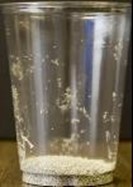
Granular pesticide formulation.
Advantages:
o they are easy to place where needed they are fire less toxic
o No problem of pesticide to be blown by wind
o The chemical is released slowly hence ensure longer protection.
Disadvantages:-
o It can not be applied on foliage oil may damage plant leaves.
o Costly to produce i.e. contains 10% active ingredient and 90%
o Carried material which is expensive to compose and transport.
b) Dust; they are directly applied e.g. DDT. Actellic super.
Advantages.
o They contain smaller particles than granules and pellets; hence increases greater surface are of reaction.
o It is easy to use.
Disadvantage:
o It may cause environmental pollution as it is easily blown out by wind.
o It can easily be washed out of application is shortly followed by rain.
c). Wet table Powder (WP): This is very close to dust but in this form; matter is mixed with water before applying to the pest e.g. De-thane, M45, Endosulphan, Afalon etc.
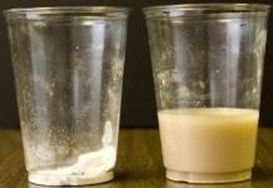
Undiluted and diluted wet table powder formulation.
Advantage:
o Are conveniently mixed with water hence easily transported.
o They have better surface coverage than dust or granules, because of way small particle
Disadvantage:
o The suspension in the tank may settle at the bottom and form a sludge hence reducing effectiveness of the active ingredient
o If high concentration in used the suspension may cause blockage of nozzles leading to inefficient application and wastage of time.
d). Pellets: They are applied directly as granules
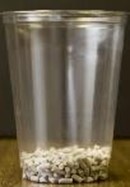
Pellet formulation.
ii) Liquid formulation : Chemical in liquid form include:
a) SOLUTIONS: e.g. Copper sulphate as solution in water, DDT as solution in oil.
Advantage:
It is useful if the target cannot be easily reached.
needs skill in application
b) Emulcifiable concentrated (EC) This formulation produces an emulsion when mixed with water e.g. Nogos 50 EC,
Advantage – No problem of spray blockage
-Can be mixed by oil and water and have better coverage than wettable powders.
Disadvantage:
– Use much water.
– The spray could be blown by wind causing environmental pollution.
c). Fumigants: They can either be which e.g. phostoxin or liquid e.g. EDB (Ethyl/ Dibromid) but changes to gas above room temperature.
-They must be kept in sealed container.
Advantage: Produces quick and effective action
-Long lasting effect.
Disadvantage:
Application needs skilled person.
Highly dangerous it inhaled
Expensive
WEEDS AND WEED CONTROL
Meaning: A weed is any plant growing where it is not wanted and whose economic disadvantages outweigh the advantages.
Economic importance of weeds
Useful/Advantages of weeds
i. When rotten, weeds provide organic matter and mineral nutrients to the soil
ii. Some weeds are used as vegetable e.g. Pig weed (Amaranth us spp) whose leaves are boiled and eaten
iii. Weeds provide a good surface cover and thereby minimize water evaporation and control soil erosion.
iv. Some weeds are providing food for wild games as well as domesticated animals.
v. Weeds reduce Carbon dioxide in the air, and increases Oxygen in the air through Photosynthesis activity.
vi. Weeds provide medicine for treating various diseases.
Harmful/ Disadvantages of weeds
i. Weeds complete with crops for plant nutrients soil moisture, soil air, light and space.
ii. Some weeds are poisons to man and livestock e.g. Thorn apple (Datura stramonium).
iii. Aquatic weeds like the Nile cabbage, can block water ways, rivers and lakes; making navigation and fishing difficult.
iv. Weeds affect the formation and nglish-swahili/distribution” target=”_blank”>distribution of roots e.g. in heavily weeds infected plots, crops have relatively less roots.
v. They also lower the quality of farm produce
vi. Weeds reduce crop yields, This is because the plant size and height is reduce exposing small photosynthesis area per plant and hence producing small amount of carbohydrates.
vii. Some weeds are alternate host for some of the most destructive pest of commercial crops e.g. cotton stainer can survive on wild plant related to cotton.
viii. The y reduce the market value of the crops
ix. They lead to extra work, during cultivation and harvesting.
WEEDS CONTROL MEASURES
There are 4 ways of controlling weeds namely:
a) Cultural
b) Chemical
c) Mechanical
d) Biological
a) Cultural means
In this method the main objective is to make the environmental not conducive for weed growth, but giving the crop the best condition that favors its growth these measure include:
i. Crop Rotation
Good rotation program me, includes a resting phase of which the land is planted with grasses/legumes. This will help in suffocating some of the prevailing weeds after the cropping period.
ii. Proper spacing.
One of the main objectives of proper spacing is that crops are able to smother, weeds at an early stage.
The wider the spacing the higher the risk having bigger and more weeds between rows and within rows.
Hence in proper spacing, weeds become weak and easily suppressed by crops.
iii. Time planting
Enable crops to establish themselves and grow early enough, so that by the time, weeds reaches competitive stage, the crops remain unharmed. In the plants become established enough before weed multiplication.
iv. Mulching: This covers the weeds, so that they deprived of light, hence preventing their growth.
v. Cover crop: Use of cover crop has similar effect as mulching. Sometimes knows as smother crop.
vi. User of clean planting material: this involves use of weed free planting materials and hence prevent introduction of weeds in to the farms
b) Mechanical used control.
This involves the use of farm implement and machinery.
Use of hand hoes, slashes, ox-drawn implements and tractor drawn implements during the time of seedbed preparation, help to dissociate the weeds by exposing the roots to the air, also burying deeply (tillage) the weeds and this killing them.
This process employ the following ways:-
i. Uprooting weeds by hand: is mostly done on crops whose spacing is tool close, to allow mechanical cultivation. e.g. rice farms.
ii. Slashing of weeds: Use of slashes to remove top growth of weeds, is very effective in controlling annual weeds.
c) Biological weed control.
In the method insect, ducks, geese, goats and sheep, serve greatly in controlling weeds, as well as user of parasitic insects.
Caterpillars’ of various insect species control weeds by eating the foliage and other parts of the plant.
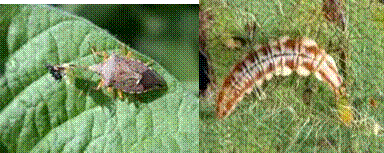
Disadvantage of Biological means:
- The agent introduced might be a parasiteOf food or cash crop.
- The agent might not be in numbers big enough to control weeds effectively.
- The agent many destroy predators as well.
edu.uptymez.com
d) Chemical weed control.
Chemical means of control, involve the use of herbicide (weed killer).
o They can be classified as:-
i. Pre-emergency herbicides.
o These are herbicides applied before crop are planted before crop seeds germinate e.g. Atrazine,
ii. Post-emergency herbicides.
o The are herbicides applied after crop seed emergence e.g. 2, 4, D.
NB:
Most of pre emergency herbicides are non-selective i.e. they kill all types of plants; which post emergency herbicides are selective i.e. they only kill specified species only e.g. 2 4 D Amine kill broad leaved plants.
Other classification is based on mode of Action:-
i. Contact herbicides.
– These kill only the part of the weed with which they come into contact e.g. gramaxone/paraquat.
ii. Growth regulators/systemic.
They are absorbed by weeds through, leaves, stem or roots
They affect plants through systemic action e.g. 2-4-D, M C P A, Dalapon e.t.c.
iii. Soil sterillants
These chemicals are absorbed by roots and prevent plant growth when they are in lethal concentration in the said e.g. linuron, propachlor e.t.c.
Advantages of using herbicides.
i. Herbicides lower cost of production i.e. Time is saved and leas labour in spent per unit area of land cleared of weeds.
ii. High yields are achieved because of efficient weed control.
iii. No tilling of land hence no disturbance of the soil structure, no destruction of plant roots.
iv. Harvesting is relatively easy because less interference with weeds. v. Good quality product can be obtained.
v. Noxious weeds can easily be controlled. vii. Less labour in used.
Disadvantage of using Herbicides.
If used without care, herbicides can injure or destroy crop especially with non relative chemicals which kills any plant which come into contact with.
All herbicides are poisonous to human being, hence precautions should be taken during handling then, so that is no dived contact with them.
Some herbicides have got a long residual effect, thus they can persist in the soil causing injury to crops grown in subsequent reasons e.g. Atrazine.
Pollution of water bodies and air by herbicides may cause death to birds and fish.
COMMON WEEDS OF EAST AFRICA
BROAD LEAVED WEEDS
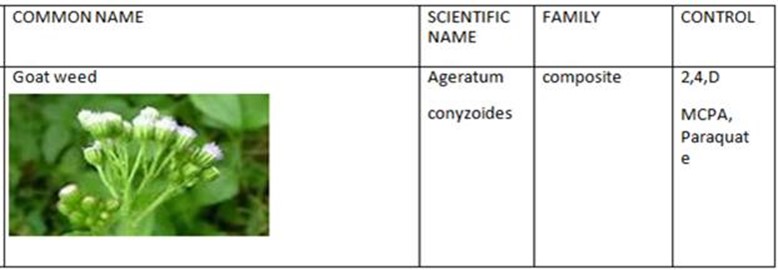
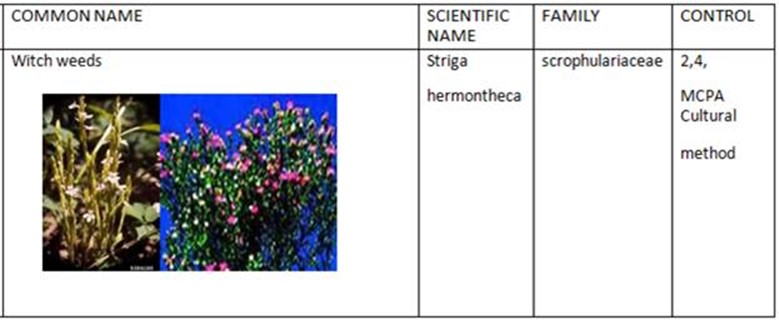
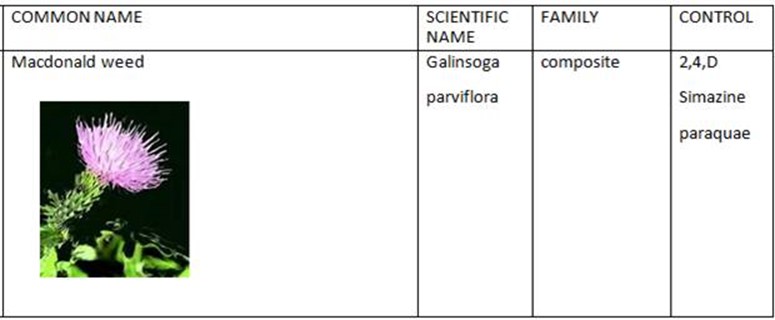
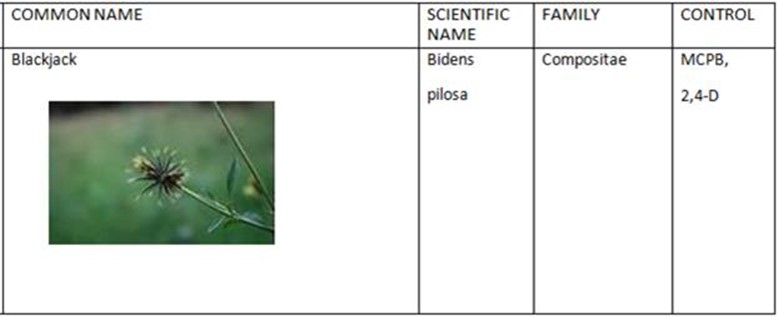
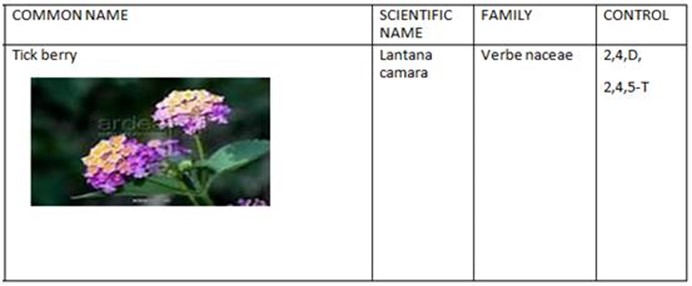
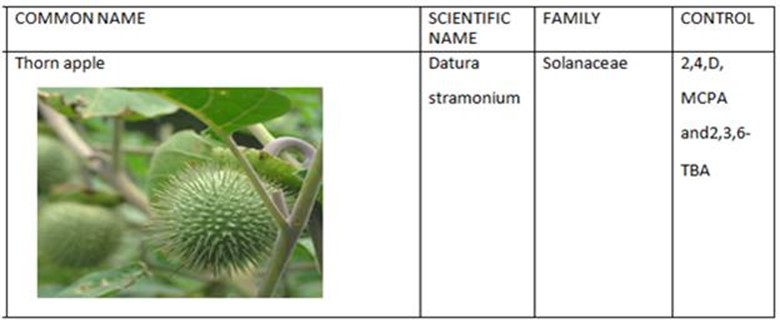
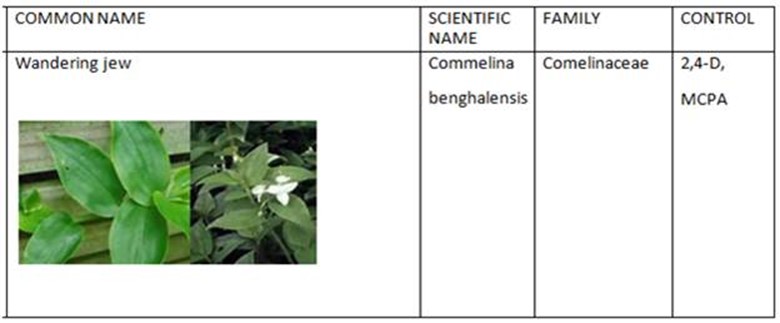
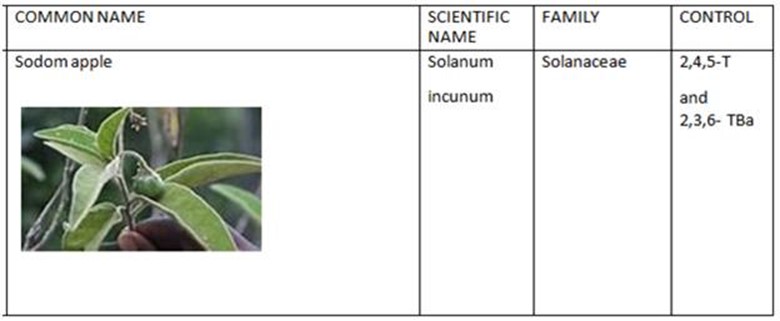
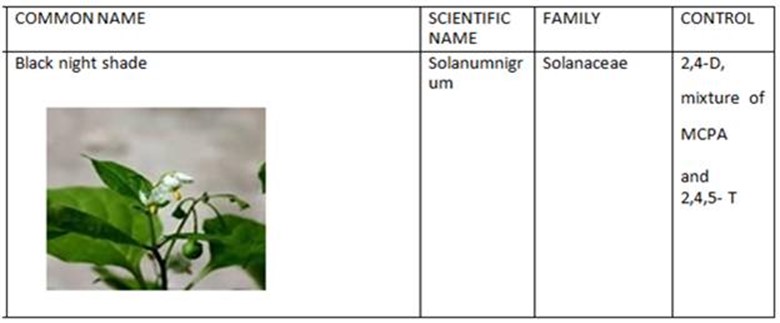
A.GRASS WEEDS
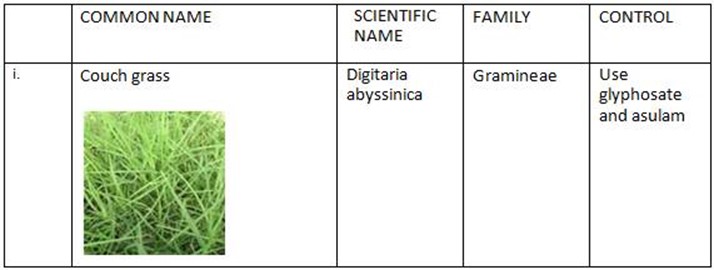
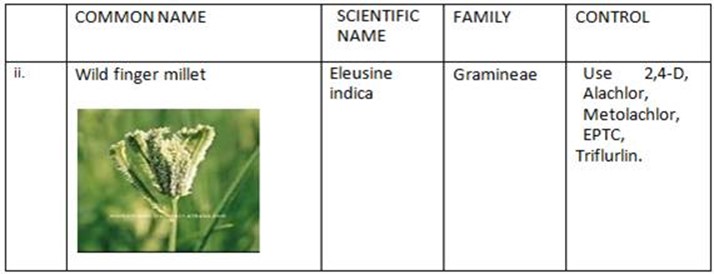
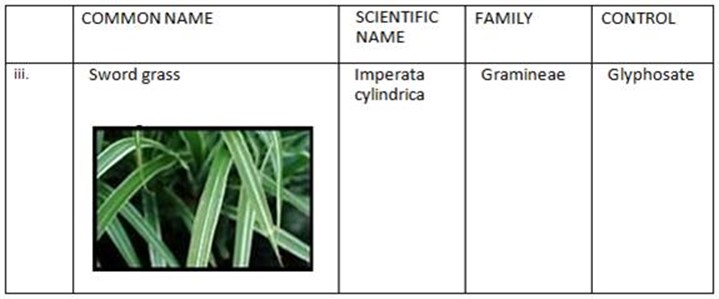
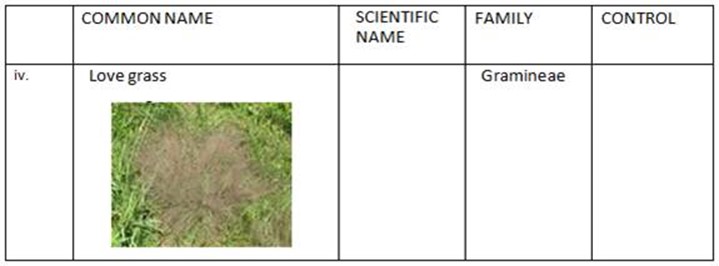
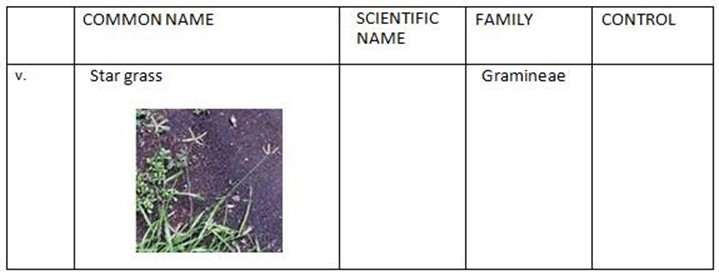
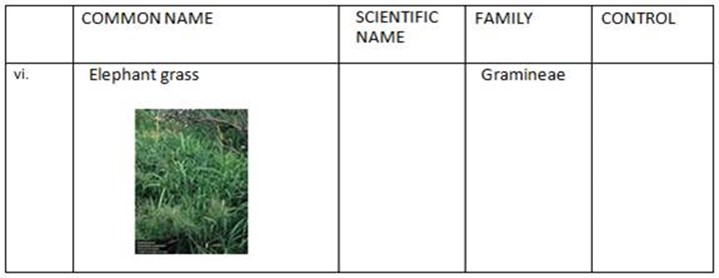
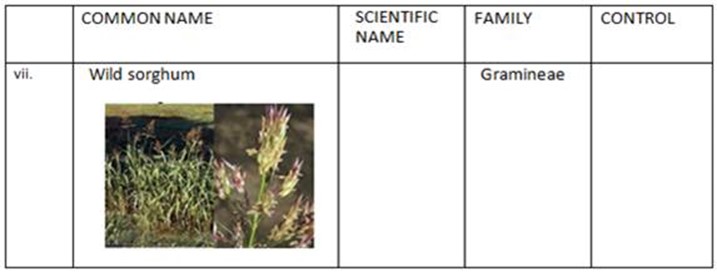

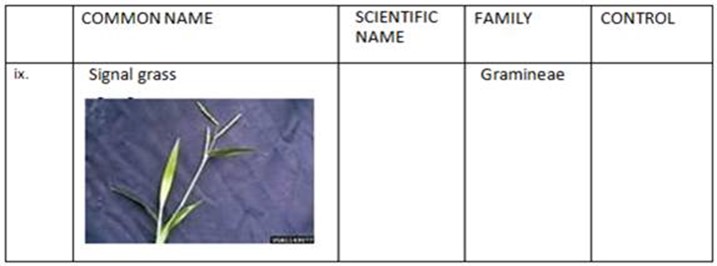
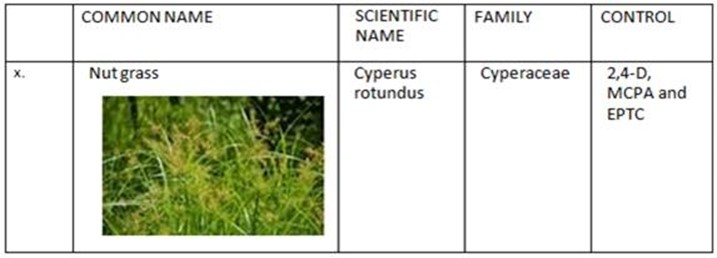
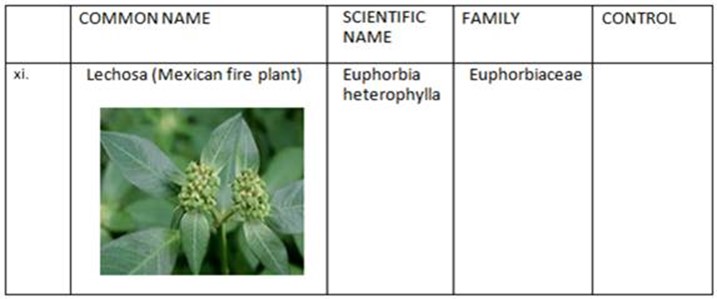
Precaution to be taken when using herbicides:-
• Read and follow manufacturer’s instruction.
• Use protective gear, e.g. overall, gum boots, gloves, breathing mask.
• Avoid inhaling the chemical.
• Don’t spray against the wind.
• Don’t eat or smoke while spraying.
• Wash your body thoroughly after spraying chemical
• Containers and papers should be disposed safety.
• Spraying equipments must not be washed in water sources for drinking.
COMMON HERBICIDES USED IN EAST AFRICA
o 2,4,D AMINE (Fernest, Ferminine, phorolteester) they are selective controlling broad leaved weeds, usually applied post emergency
o MCPA (Agrixine, plenary, enephis emploal) function as 2 -4- D
o Dalapon (daipon) translocated selective herbicide.
o Paraquat (Gramaxon) is a non selective herbicide, non-tronslocated and pre-emergence applied.
o Diquant (Regline) functions as paraquat.
o Altrazine (Gesophin, Basagram) applied in pre-emergence or post emergence- very persistent in the soil.
o Suazine – as Atrazine.
o MCPP (Melopueps, methoxine, deovatoxit) it is selective and translocated i.e. 2,4,5,7 (Trioxine, phorties)
HORTICULTURE
Meaning: This is the production of vegetable, fruits, flowers and vines.
NB:
o The art and science of growing vegetable is olericulture.
o The art and science of growing fruits is pomology
o The art and science of growing flower is floriculture
o The art and science of growing vines is viticulture
o A horticultural unit where vegetables are grown is a garden
o A horticultural unit where fruits are grown is an orchard
o A horticultural unit where wines are grown is a vine yard.
Hence horticulture has been divided into 4 groups:-
1. Vegetables: e.g. Tomatoes, cabbage, cauliflower, carrots, lettuce e.t.c.
2. Fruits: e.g. mangoes, orange, bananas, pineapples, pawpaw sect.
3. Flowers: e.g. Hibiscus, cassia, creranium, rinnia e.t.c.
4. Vine production: e.g. grapes.
IMPORTANCE OF HORTICULTURAL INDUSTRY
Human Nutrition: Horticultural products supply nutrient vitamins and mineral to human diet, hence supply good diet for their health.
Source of Income: After selling the product, people earn money which can be used in raising their
standard of living.
Foreign exchange Earner: Export of some products e.g. flowers canned fruits or raw fruits earns foreign money.
Source of employment.
LIMITATION OF HORTICULTURE PRODUCTION
These are 6 main factors affecting/influencing horticulture production.
i. Climatic factors:-
a) Rainfall: Some areas receive a lot of rain in which facilitate fungal and nematodes development due to humid condition while other receive low, rainfall which require irrigation of the horticultural units and development of leaf eating and sucking insect.
b) Temperatures: most ports of Tanzania have high temperature throughout the year causing high evapo-transpiration creating high soil water loss.
o Also horticultural products are very perishable hence under extreme temperature they rot very easily if storage and transport is poor.
ii. Edaphic factors:
Also knows as A biotic factor – it is a non-organism factor. It is only describing soils physical and chemical characteristics towards crop grown.
Most part of Tanzania soil generally experience e.g. poor soil structure, poor water holding capacity etc.
Soil has low organic matter content due to high temperature as well acidity due excessive leaching during rainy season. Some part has heavy soils which are poorly drained.
iii. Biological factor:
It is also knows as Biotic factor, describing two effect of living organisms, to crop plant growth development. Since Tanzania is a tropical country, the climate is suitable for the development and multiplication of weeds, pest and diseases, as a result this in strong competition between organism with horticulture crops.
iv. Economic problem.
a) Risk and uncertainties: Farmers face a lot of risks and uncertainties such as low weather, price fluctuation pasts and disease outbreaks e.t.c.
b) Low level of income: Most of the farmer has low income of which they cannot afford to invest in horticulture production, due to lack of capital.
v. Social problem.
a) Traditionalism among farmers; generally farmer are slow adopters of new innovations e.g. new skill in producing horticultural crops such as vegetables or flowers.
Hence they continue to practice their traditional ways of farming in producing crop they only used to grow.
b) Health of the farmer; Farmer need energy to work in different farm operations. Due to low level of income most of the farmers receive poor nutrition resulting to failure to work effectively in the field.
vi. Relief factor.
This factor describes the effect of elevation in relation to crop growth.
The elevation influence temperature of the area and in turn affects the rate of organic matter decomposition, evapo-transpiration and development and multiplication of microorganisms such as pests, diseases and weeds.
Most parts of the country lie in low elevation (low land temperature is high hence accelerating high rate of OM decomposition than its replacement and thus reducing soil moisture content, finally low yields.
PRINCIPLES OF HORTICULTURAL PRODUCTION
These include all activities involve in the production of Horticultural crops they include:-
i. Site selection.
ii. Land preparation.
iii. Crop propagation.
iv. Crop Management (Field)
v. Harvesting
vi. Storage.
a) Site selection.
When selecting a site for horticultural production the following should be observed:- a. Soil characteristics and topography.
Select a site with soils which are well drained as vegetable crops do not withstand water logging; and poor mineral element.
Heavy clay soils, and poorly sand soil are not ideals; due to pool drainage and nutrient availability.
The area should be preferably flat or with gentle slope.
b). Climatic condition.
Different horticulture crops require/favors different temperatures. Hence the area should have temperature which is suitable, for the kind of vegetable e.t.c you are growing.
Also rainfall of the area should be considered for any irrigation programs if needed.
c). Reliable sources of water.
Vegetable require moisture, hence the site should be near permanent water supply e.g. a well, a dam, a stream or river to make irrigation possible.
Irrigation water should be fresh water and not salty water; as crop will become stunted.
d). Market and Transportation
Vegetable and fruits are perishable i.e. they go bad easily hence they should be sold or eaten within a few hours.
Hence it is important to select an area which is near a good and reliable market and easily accessible (reached) with reliable transport.
ii. Land preparation.
Involve the following operation.
a). Field clearance:
When opening a horticultural unit with big trees, ring bark all the trees. a considerable period before seedbed or planting holes is prepared.
This is done because in the roots there Are carbohydrates which attract fungus? Known as Armillaria mellea causing root rot.
NB:
When you ring back the tree, it is able to transport water from the roots (through the xylem) but fails to transport manufactured food from the leaves (as the phloem has been cut). Hence starving the roots from getting carbohydrates. If you cut the tree without ring backing, the roots accumulate carbohydrate later when you plant your crop will be affected by the fungus.
After uprooting all the trees, slash the bush and grass; collect and heap.
Direct planted vegetables/fruits e.g. in orchards
Marking out planting holes, by use of ropes, tapes and pegs.
The distance of marked holes should be equal to the spacing of the respective vegetable/fruit.
On sloping land mark out rows of holes along the contour in order to minimize soil erosion.
Nursery planted vegetables.
Marking out the position of seedbeds in the garden, by use of ropes, and pegs with general measurements of 40cm X120cm; leaving a path of 60cm between beds.
NB:
The length of the seedbed should sun across the slope of land.
Did the soil on each bed and mix with farm yard manure or composite?
Break down soil clod and level each seedbed with a rake.
iii. Propagation of Horticultural crops.
Propagation is the process of raising a plant one generation to another either by needs or vegetative means.
a). Propagation by seed (sexual propagation)
In propagation of crops by needs, germinate and form young new plant called seedling) he use of seeds is known as generative or sexual propagation.
o Crops grown through needs are carrot, cabbage, pepper, egg plant, spinach, onions, tomatoes, cauliflower and lettuce.
o Usually the seeds of these vegetables are small in size. For their reasons, they are normally first sawn in small sites called nursery
o In the nursery vegetable, seeds are sown very close together; and late phished in well prepared seed beds. The process of shifting seedling from the nursery to seeds beds is known as Transplanting.
Purpose of Nursery
o Taking care of seedling is made easier
o Some seeds are so small that they cannot be sown directly in the field e.g. carrots, spinach etc.
Qualities of a Nursery site.
i. The place should be of a deep fertile soil
ii. The place should be near a garden or orchard site.
iii. The place should be near water supply.
iv. The place should be on a gentle slope.
How to raise seedling in a nursery.
1. Seed sowing: after nursery bed preparation sow the vegetable seeds in rows (drills) of about
0.5 – 0.75cm deep, spaced 15cm apart; and cover the seedbed with a thin layer of soil.
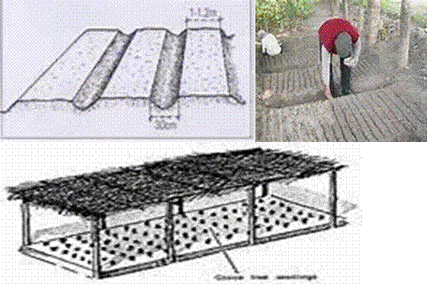
2. Mulching: after seed sowing a thin layer of mulches (grass cover) should be applied so as to conserve soil moisture and regulate soil temperature.
3. Watering: water the nursery bed regularly early in the morning and late in the evening. Avoid applying excess water as May because fungal disease called damping off.
4. Removed of mulches: as soon as seedling emerge, remove the mulch and replace by an overland shade build over the seedbed by using poles and grasses.
5. Weeding and thinning any weed growing on the beds should be removed by hand. if seedling is overcrowded trim (thinning) out to help the seedlings to grow healthier and strong.
Age of Transplanting
Seedling of most vegetable crops is ready to be transplanted when they are:
5-6 weeks old or
4-6 leaf stage or
10-15 tall.
2-3 weeks before transplanting, remove the overhead shade; and reduce watering in order to harden off the seedling as to expose them to environmental condition which in relatively the name in the field
The best time of transplanting seedling in the late evening as they will be exposed to low temperature overnight hence reducing water loss.
c) Vegetative Propagation
This is a type of asexual reproduction as some vegetable crops fruits may produce seeds which are not viable e.g. most of the flower.
Method of vegetative Propagation
Planting storing organs e.g. corns, rhizomes, stem tubers, bulb, suckers etc.
o Layering
o Grafting
o Stem cutting
o Budding
Stem cutting: Cutting are usually made from stem or branches of the plant
When making cutting stem and branches are cut into pieces the length of which depends on the type of crop
Example: Cassava, sugarcane, sweet potato etc.
NB: Stem cutting are plant upright and at planting position
If they are laid down they may fail to produce work
Grafting, or ‘Budding’ Citrus Trees
‘Budding’ refers to the particular form of grafting best suited for the propagation of citrus trees. In a bud graft, a bud, along with some bark (bud wood), is removed from the variety of tree (scion) the grower is trying to propagate. The bud is then inserted beneath the bark of a host tree (rootstock). As the ‘T’ budding procedure is the one generally recommended for the inexperienced grower, it is the one we’ll describe below.
Step One
Select the variety of tree you wish to cultivate. Look for a tree that is vigorous and healthy. Remember that some states prohibit the importation of bud wood due to disease concerns so check with local authorities if you plan to use imported budwood or even bud wood from quarantined areas of your own state.
Step Two
Budwood is usually collected during the growth period between
April and November when the bark can be separated easily from the wood. Carefully collect rounded budded twigs that have begun to harden. Do not use very young buds from the current growth flush. Trim the budwood to 8 or 12 inch lengths. Try to use the collected budwood as soon as possible. If you must store the wood for a period, place it in a sealed polyethylene bag in the vegetable crisper of your refrigerator. Check periodically for moisture build-up or mould. Use the stored buds within 3
months.
Step Three
Select the young citrus tree that you wish to use as rootstock. Look for a variety of tree best suited for vigorous growth in your area. With a sharp knife, make a one-inch vertical cut through the bark of a healthy rootstock stem about six inches above the ground. At the bottom of the vertical cut, make a horizontal cut,
the two cuts forming an upside down ‘T’.
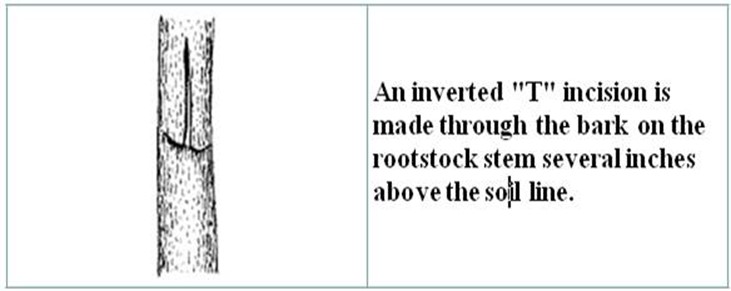
Step Four
Using your knife, remove a bud along with a one-inch sliver of wood and bark from a budded twig. Carefully insert the bud under the flaps of the ‘T’ cut of the rootstock with the wood of the bud sliver completely enclosed by the ‘T’ flap. Wrap the graft
with budding tape making two or three rounds below the bud and two or three rounds above. Wraps should be removed not later than 30 days after the graft. A green, healthy looking bud will indicate that the graft has succeeded.
|
|
|
|
A smooth, continuous cut removes abud and a thin sliver of wood which is used in T budding. |
DuringTbudding,the bud is slippedunderthe bark flaps created by making the “T”incision on the rootstock. |
edu.uptymez.com
A smooth, continuous cut removes a bud and a thin sliver of wood which is used in T budding. During T budding, the bud is slipped under the bark flaps created by making the “T” incision on the rootstock.
Step Five
In order to stimulate the growth of the union, the bud must be forced into growth. To force growth, cut 2/3 of the way through the rootstock about 1.5 inches above the bud and on the same side as the bud. Then push the rootstock over to lay on the ground. After the bud has grown 3 to 4 inches, the top of the rootstock can then be cut off about one inch above the top of the bud. To prevent competition from rootstock buds, they should be removed as soon as they develop.
Budding: This is a method of vegetative propagation where by closely related plants
(i.e. plants belonging to the same genus)
Are joined together. Such plants are said to be compatible i.e. plants which can form a union when joined together in one way or another
Example: propagation of citrus by bidding
Propagation of citrus by bidding is done in stage as follows:
STAGE I: Preparation of root stock
Select ripe rough lemon fruits from strong lemon trees separation the seeds from the fruits and wash them with clean water.
Sow the needs on well prepared money need bed 2.5cm deep; 2.5cmx15-20cm between needs. Do not allow needling to dry before you sow them.
When seedling are 5.8 months old, transplant them into seedling beds. During up rooting of seedling, prune the stem to 40cm above ground and prune roots leaving of 30cm long. Transplant needling at a spacing of 30cm x 90-120cm.
Leave the needling to grow for 6 month after transplanting
Transplanting at this stage the plant (roots stock) is ready for budding.
STAGE II Budding
Cut bud wood from sweet orange twice, which are healthy and high yielding such twice are called scion trees or mother trees
Remove the weak upper part of the plant shoot and the leaves by sharp knife.
Make a T- shape cut on the root stock stem 20-30cm above ground level a shep knife. by first making a vertical cut 3-5cm long through the book of the shoot. Then make a horizontal cut 3cm long above or below the vertical cut.
Slice the bud with a shield from the scion wood.
Insert the bud under the flaps of the bark at the cut do not turn the bud upside down
Wrap the budded area with polythene tightly to make it water proof. However leave the bud protruding.
After budding watch from day to day it the bud has healed. When the bud heals cut off the root stock just above the bud so as to ennglish-swahili/courage” target=”_blank”>courage the new shoot to grow
The budding seedling may be ready for transplanting about 1-11/2 year after budding.
Grafting: This is done by joining a scion onto a root stock. The scion is a small piece of shoot cut from a true of a desirable characteristics e.g. big good fruits, ability to bear many fruits
The root stock is a shoot, containing a roots system with good characters e.g. drought resistance, disease resistance growing well even in poor soils etc. whose top part of this shoot is cut leaving a stump.
Types:
Whip and tongue grafting
Cleft grafting
Approach grafting
Procedure for whip and Tongue grafting.
Select a suitable scion and root stock.
Make a sloping cut on the tip of the root stock.
Make a slopping but matching cut at the base of the scion
Male a V shaped cut on the root stock as well as the bottom part of the scion.
Place the scion onto the root stock so that their tongues become inter locked.
Tie the joint firmly with rope, enclosed in a polythene tape so that the place remains moist.
Remove the top after a strong union has formed.
Procedure for cleft grafting.
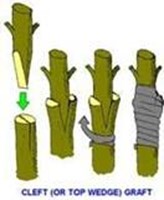
Clift or top wedge graft
Select suitable root stock and a scion.
Cut the stem of a root stock is order to leave a stump
Split the top 10cm of the stem along the radius.
Male a wedge on the base of a scion.
Open the split and insert the scion. Procedure for Approach grafting.

Select a suitable Branch of a root stock and a suitable branch of a scion.
• Shave off a thin layer of bark on the root stock stem and scion stem.
Layering: This is a method of vegetative propagation which is useful for propagation only a few offspring per planting at a time.
Types:
Simple layering
Mound layering
Air layering or marcotting
Procedure for simple layering
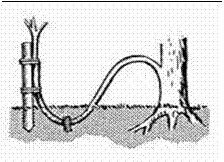
This technique is suitable/possible for plant with slender branches which can be bent down ward to the ground without breaking.
Bend the stem to the ground
Slice off the bark and phloem from a section of plant
(i) Burry the sliced off portion of the stem into the oil and cover with soil
(ii) and hold in place by hooks peg.
If it is dry season; continue watering, until roots and shoots appear on the buried portion.
Plant the rooted shoot at the decide place.
Procedure for Mound layering
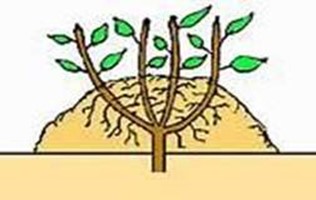
This technique is used to propagate dicotyledonous plant which produces several side branches or shoots.
Select the plant you desire and cut off the shoots 4cm above ground level.
Allow the shoots of the plants which you have cut to produce several side branches or shoots.
When shoots reach 10cm tall heap or mount oil around their bases. Continue watering until roots are formed.
Separate the rooted shoots and plant them in a nursery.
Procedure for Air layering.

Air layering can be done on branches which are up to 1.5cm in diameter Wound one point of a branch.
Cover the wound with sterilized soil or any other suitable rooting media using polythene or banana sheath and tie with a rope
Water the medium regularly until roots emerge.
Cut the branch just below the roots and then plant in to form a new plant. IV)
Transplanting planting
The best time to lift and transplant seedling is late in the evening as they will be exposed to low temperature during the night.
Planting holes on needed should well be prepared whose distance should be equal to the recommend spacing of the vegetable crops you are growing
Each planting hole should be big enough to occupy the root system of the seedling.
Firm the soil strong avoid the plants as you fill in the hole.
Provide temporary shade for seedling.
FIELD MANAGEMENT
a). Watering: Moisture is necessary for vegetable crops if no rain, irrigating water could be supplemented.
Do not apply water in the afternoon especially if the sun is shining, as you may cause lens effect and scorch the leaves.
Apply water early mornings and late evenings.
Avoid excessive amounts of water as may result to fungal infection (Damping off). b. Weeding: weeds are plants which grow in a place where they are not wanted.
Remove all weeds as room as they appear to facilitate vigorous growth of seedling.
c). Thinning: When the seeds germinate, the seedling may be overcrowded hence need thinning. This is the removed or pulling out some of the seedlings in order to leave the right numbers per unit area.
d). Mulching: if the weather is rather dry, if may be necessary to apply surface cover (mulch) to reduce
Moisture evaporation.
This is done by spreading dry grass on the surface of the soil.
However mulch is possible only if the grown crop planted is wide space.
e). Fertilizer application: Most vegetable crops require a top dressing of nitrogen on fertilizer in order to grown well, by applying nitrogen fertilizer 2-3 weeks after germination or after transplanting the seedling phosphate fertilizer to the soil in the seedbed just before transplanting.
f). Staking: This is the provision of supports for stem of plant, which have weak or climbing stems e.g. tomatoes, cucumber and lina beans.
Supports which may be used are long stick, stuck upright into the ground near each plant.eg. Pests and Disease control.
Vegetable crop are sometimes infested by pests when growing in the garden. as well as disease.
Suitable measures must be done to reduce their effects.
h). Gapping/gap filling: This is sowing where seeds did not germinate or replacing a transplants seedling which has been damaged, diseased or eaten.
The aim is attaining the optimum plant population per unit area.
i). Pruning: This is the removed of unwanted or unproductive parts of the plant, usually done in orchards.
j). Crop rotation: This is the growing of different types of crops in sequence in the same piece land in an organized manner.
Crop rotation of vegetable is the systematic arrangement of growing different vegetable crops in service in the some piece of land. Season after season vegetable crops are divided into 4 groups the purpose of rotation.
I. Main group: cabbage, tomatoes, potatoes and kale.
II. Legumes: peas, beans, Soya, bean.
III. Root crop: carrot, deck and onion.
IV. Optimal group: egg plant, lettuce and capsicum.
The main crops are grown first in rotation because they are heavy feeder: then followed by legumes which returns the fertility; later followed by root crops.
Optimal crops can be grown in any order.
Vegetable rotation is aimed at planting vegetable at different feeding habit; so as to use nutrients at different levels in the soil. Also different families to reduce effect of pests, weeds and disease. Likewise legumes are planted to replenish soil nitrogen.
e.g. of late maturity cabbage
VEGETABLE PRODUCTION
PRODUCTION OF LEAFY VEGETABLE CROPS.
CABBAGE
Scientific name: Brassica oleraceae
Family Cruciferae
Characteristics: This is a leafy vegetable which is eaten raw or cooked.
It is characterized by possessing
4 petals
4 sepals
4 stamens
2 fused carpel
Forming fruit which splits from bottom.
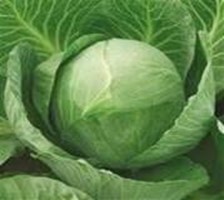
VARIETIES
Late maturing and large varieties include price drum head; early jersey; wake field
Usually taken 31/2 months from sowing to harvesting.
Early maturing and small varieties include sugar load usually taken 21/2 months to maturity.
Nutritional importance: Leaves contains iron calcium, phosphorus and potassium; as well as rich in vitamins A and c.
Production areas: Cabbage prefers moist condition and elevation of 760m above sea level. Therefore the vegetable is commonly found in temperate climatic of Tanzania.
Ecological requirement.
Cabbage grow well in cool or warm climate with fertile, moist, well drained soil with ph 6.5
PROPAGATION
Nursery: They are propagated by needs. Since the seeds are too small they have to be stated in the nursery.
Make raised seedbeds and apply manure, later drill rows 20cm apart. Put seeds in the drill cover, put shade on the bed and continue watering. (The seed in a drill should be 2-3 cm apart).
Transplanting.
After one month seedling are ready for transplanting.
Suitable spacing per large varieties is 60cm x 60cm and for small varieties is 45cm x 45cm.
Cultural Practices
Weeding weed regularly to keep off weeds unit the cabbage beans cover the ground.
Manure and fertilizer application.
Add 1-2 handfuls of manure or compost in every planting hole at transplanting time.
if manure or compost is not available; add one table spoon of Dsp to each planting hole.
When seedling reaches 20cm tall; top dream with one table spoon of CAN (Calcium ammonium nitrate) per plant.
urea 1 tea spoonful per hole of DSP (DOUBLE SUPPER PHOSPHATE)
Pest and Disease control.
Cabbage is very susceptible to past and Disease attacks
Major inserts include:-Diamond back moth
susceptible Aphids(cabbage aphid) Cabbage saw-fly
Cut worms (during transplanting)
Flea beetles.
Control: Spraying insecticides e.g. Malathion Cyper methrin and Diazinon etc.
Common diseases of cabbage include, Black rot, Dark leaf sport, Downy mildew and White rust
Control:
i). Black rot, Dark leaf spot and white rust cannot be controlled by chemical spraying.
Hence effective method is
Crop rotation
Use of certified used
ii). Downy mildew: Use Benomyl fungicide spray.
Harvesting: Cabbage is harvested when the heads become firm.
Yield is 40 tones/hectare
The time to rich maturity varies from 60-170 days.
LETTUCE
Scientific name: lactuca sativa
Family: Compositae
Characteristics: The vegetable has numerous tiny flowers which form I disc-like flower head with 2 florets, central Disc florets and marginal ray florists.

VARIETIES Include
o Great lakes
o Webbs wonderful
o New York
Ecological Requirement
o Rainfall: Adequate rainfall-2500mm/per annum.
o Temperature: Cool/low temperature
o Soil: Well drained sandy 10am to clay 10am soil and moist all the time to avoid it to become bitter if the soil is dry.
PROPAGATION
Nursery: Sow seeds inn nursery bed in drills (rows) space 10cm a part and 1cm deep; then cover the soil with a layer of mulches using dry leaves; or over head shade.
Transplanting: Seedlings are ready for transplanting 2-3 who after nursery sowing; or 7cm fall.
o During transplanting, choose sting seedlings and plant them in row space 30-45m; and 30cm between plants i.e. 30cm-45cmx30cm as spacing.
CULTURAL PRACTICES
Weeding: Regular weeding should be done. Avoid splashing soil into the lettuce leaves as may lower the quality of the leaves.
Manure and fertilizer.
A few day before transplanting, apply sufficient manure 5-6 tones/hectare on the transplant beds and mix through with soil 3wks later apply CAN AL the rate of 100kg/hect.
Pest and Disease control.
Lettuce plant sometimes suffers from a growth disease known as Heart rot; where by the crop become rotten inside.
Control: No control except in subsequent plantings increases space.
Nematodes: This is a most important group off past they cause student growth and damage roots.
Control:
crop Rotation
Use of nematocide before transplanting
Avoid excessive watering
Harvesting: The vegetable is ready for harvesting 6-12 weeks after transplanting. Cut the lettuce when the hearts are fully development.
Yield is 10 tones/hect
PRODUCTION OF LEGUMINOUS SEED VEGETABLES
BEAN PRODUCTION
Scientific name: Phaseolus vulgaris
Family: Leguminaceae
Characteristic: Beans are rich in protein ranging from 17- 31% with an average of 25%>
VARIETIES:
Canadian wonder Bean (CWB)
Selian wonder Beans (CEB)
Kabanima
SUA 90
ECOLOGY: In Tanzania beans are found in temperature climate with an attitude 600m – 27m above sea level.
Rainfall should be high during vegetation growth undesirable during the late stage (i.e. flowering) of growth.
Soil should free disease.
PROPAGATION
Is done by seeds which are directly own in the field. Can also be intercropped with main crop like maize.
For pure stand a spacing of 0.45-0.6 x 150cm( i.e. 45 – 60cm x 150cm)
CULTURAL PRACTICES:
Weeding: should be done regularly at during the operation earthing up is necessary i.e. pilling soil around the stem of the plant.
Manure Fertilizer.
As it container nitrogen fixing bacterial, nitrogen fertilizer are not necessary. If needed insulation (i.e. coating seeds with innoculum i.e. artificial bacterial) to stimulate formation of nodules in the roots.
Pest and Disease Control.
Bean fly: (Melanogromyza spp). The insert feed on stem tissue, causing the stem to be swollen and cracked.
Control: Use dieldrin chemical.
American bollworm (Heliothis amigera). Cause damage to flowers and pods. Control: Early application of insecticides e.g. selecron.
Bean Rust: Is a fungal disease caused by fungi uromyces spp. causing brown sport on leaves.
Anthracnose: is a fungal disease caused by a fungi celletotricum spp.
Hallo blight. is a bacterial disease caused by a bacterium Pseudomonus Spp.
Control: Use of cultural measuring e.g. crop rotation and timely planting.
Harvesting: Is ready 60-120 day after planting depending on the variety is done by uprooting the whole plant and biting to split the pods.
• Yield various between 25kg – 2000kg/heat for improved verities.
PRODUCTION OF FRUIT VEGETABLES.
The fruit vegetables include Tomatoes, egg plant sweet pepper and okra.
TOMATOES (Origin- South American)
Scientific name: Lycopersicon esculentum
Family: Solanacea
Nutritional importance: The crop is grown for its fruit which can be cooked as vegetables, eaten raw in salad or used in chutneys.
• The fruit is rich in vitamin and mineral 750 – 1300mm Ecological requirement warm climate with medium temperature moderate rainfall
• VARIETIES: 10cm soil attitude 0-2100m a.s.l
a. Elongated fruit types or plum tomatoes; usually grown for caning: Rome VF – Cal j
Henz 1350 and roma nova
b. Round fruit types usually grown for the fresh produce market
• Money maker
• Easy Beauty
• Marglobe

PROPAGATION.
Propagation is done by seeds planted in a nursery whose site should be in areas where potatoes peppers tobacco or egg plant were not previously planted were not previously planted; to reduce risk of disease. Never user organic manure.
Drill seeds 20cm apart and 1cm deep; thin only to leave optimum population. (Over with mulch and then overhead shed thin seedling at least to be 7cm apart.
Transplanting.
Prepare beds for transplanting; and seedling are ready when they are 10-15cm tall; usually one month after nursery sowing; at a spacing of 90cmX60cm.
CULTURAL PRACTICES.
Wedding: If mulching is applied it will help to suppress the weeds; otherwise weed regularly to reduce weed competition and pest and disease.
Manure and Fertilizer
When seedling reach 25cm tall top dress with CAN by applying one table spoon for every 4 plant i.e. 100kg/hact and later after 4wk apply one tablespoon for every 2 plant i.e. 200kg/hack. Mulching: Cover the soil with chopped mulch so as to retain soil moisture, regulating soil temperature and suppressing weeds
If there is strong winds, shelter tomatoes by planting
High growing plant.
Watering: Shout be done regularly especially in dry weather. Avoid splashing water on the leaves to reduce diseases especially Tomatoes Blight.
Pruning: Should be done very week to leave only one main stem after removing side stems.
Staking: Erect varieties need staking, by pushing a 2m stick (stake) firmly into the ground next to each plant, and tie the stem loosely with string to the stick.
Pest and Diseases
American bollworm (heliothis amigera)
The caterpillar bore into the fruit and feeds on the inner parts resulting to rotting.
Control: use permethrin or cypermethrin insecticides
Tobacco whitefly (Bemisia tabaci) there are flies found under the leaf sucking the sap and transmitting virus causing diseases case tobacco mosic i.e. stunted growth.
Control: By spraying fenitrothion or Diazinon.
Any plant showing signs of viral infection (curled, street or motted leaves) should be uprooted and burnt before spraying.
Late blight. This is a fungal disease caused by a fungi phytophthora infestans; symptomized by
Wilting and drying of leaves
Browning and rotting of the fruits
Early blight: fungal diseases by a fungal Alternaria solani, symptomized by
Brown sport on the leaves
Dropping off of fruits
Control: Both late and early blight care be controlled by spraying mancozeb soon after seedling
emergency every 2wks in dry weather and once after every 4-7 days in wet weather.
Bacterial wilt: Caused by a bacterium knows as Pseudomonas solanacearum. symptomized by wilting of the plant even in moist soil.
Control: No chemical control, just uproots and burn affected plants, and practice crop rotation.
Blossom end-rot physiological disease caused by
Too much nitrogen in the early stage
Irregular watering/too much watering
Calcium deficiency in the young fruit
Control: Regular watering Control calcium defficience
Viral Diseases symptomized by
Mottled leaves
streak or curled leaves
death of plants
They are spread by aphids and whitefly.
Control: No chemical control only a uproot and hum
If you smoke, wash hand before touching
Spray against Aphids
Use resistant varieties
Disinfest hands and pruning knife before starting pruning.
Other pests
Red spider miters
Tomato russet mites
Nematodes
Aphids
Other Diseases
Bacterial canker
Leaf spot
Leaf mould.
Harvesting
For fresh market pick when just starting ripening.
For caning pick when fully ripe
Yield 75 tone/hact.
EGG PLANT
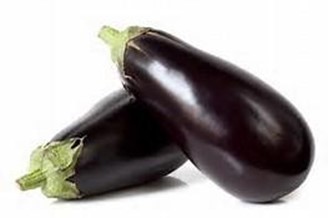
Scientific name: Solonum melongena
Family: Solananceae
Nutritional importance: Also known as bringals or brinjals are grown for their fruit which in eaten cooked in stew. Contains vitamins and minerals.
Ecological requirement. Ground well in altitudes earning from sea level to 1500m above sea level.
VARIETIES:
Black beauty – has a long strong life
Early long purple – high yielding variety with long fruit.
Early round purple: has a round fruit.
PROPAGATION.
Nursery Prepare nursery beds and mix soil with manure or compost.
Sow needs closely in drills 30cm apart and cover with dry grass mulch and water regularly
Transplanting: Select strong seedling with 4 true leaves at a spacing of 90cm x 60cm.
During the operation, one table spoon of double super phosphate (DSP) in each planting hole, when seedling reach 25cm tall Top dress with CAN around each plant.
Mulching: Mulching is important, apart from conserving soil moisture regulating soil temperature, but also keeps the fruits clean after rain or irrigation.
Weeding: Mulching can help to keep off weeds, otherwise regular weeding is necessary, until egg
plant leaves cover the soil.
Pest Disease
Epilachna beetle (epilachna spp) the beetles eat the leaves in patches.
Control: spray malathion or fenitrothion.
Stripped blister battle (epicauta albovitata) these are black and white stripped battles which eat irregular holes in the leaves.
Control: spray parathion methyl.
Gall midge (asphondylia spp) the larva feeds inside the fruit and shoots. Control: spray Malathion or fenitrothion.
Bacterial will (preudomonas solanancearum)
Plants wilt and die.
Leaf sport (alternania solani)
Circular brown spots appear on the leave
Control: Bothe of them cannot controlled by chemical only
crop rotation
use of clean certified seeds.
Harvesting: Harvest fruit, when they have attained maturity they turn yellow Handle carefully and avoid bruising.
FRUIT PRODUCTION
Orhard fruit crops include Orange. Tanganyika pineapple/ pawpaw, apples, mangoes and bananas.
Classification of fruits grown in Tanzania.
Basing on climate requirements, fruits grown in Tanzania have been categories into:-
i. High Altitude fruit crops: e.g. Apples
ii. Medium Altitude fruit crops e.g. banana
iii. Low altitude fruit crops e.g. orange, tangerine, pawpaw and pineapples.
SWEET ORANGE
Scientific name: citrus sinensis
Family citruceae or rutaceae
Nutritional importance: oranges are rich in vitamin C
VARIETIES
Valencia
Jaffa
Pineapple
Hamlin
Washington navel
Matombo sweet.
ECOLOGY
Altitude: Tropical region ranging from 900m-1200m a.s.l
The growth of orange tree is greatly reduced when the temperature falls below 120c and are damaged it atmospheric temperature fall below 30c.
CULTURA PROCTIES
Transplanting: 1-11/2 year seedling is ready for transplanting.
Prepare planting holes ready in advance just before the rainy season.
The spacing of the buddled seedlings depends on the size of the full grown true.
Small tree size variation 6.5m x 6.5m
Medium free size 7.0m x 7.0m
Large tree size variation – 9.0 m x 9.0
Make a basin during dry weather.
Watering: Never allow the young trees to show any sign of witting, by regular watering and providing mulch.
Manure and fertilize
Apply one 20 litter tin of compost or manure in each tree
Cultivate the soil within the irrigation basin to make it loose for easy water percolation.
Fertilized can be applied at yearly interval from 250gm three in the first year to 1.5kg/three
4th year and after of N.P.K fertilized (2:3:4)
Weeding: The area around the young tree should be repeat weed free by planting cover crops like beans, cow peas groundnuts etc between the rows of young citrus trees
Pest and Disease.
Frequent occurring pest are: Citrus Aphid (Taxopter citricidus)
Red scale (Aonideth aurantil
Green scale (cocus viridian)
Orange dog (papilio democium
Control: Spray Diazimon, Malathion, Feritrothion
Disease: Citrus scab (Elsinol fawcetti) fungal leaf spot (Altenaria citrii) diseases
Control: Use of copper Fungicides or Gummosis Tristenza – No can (just uproot $ Burn the affected crop)
Pruning
Remove all suckers or side shoots growing from the root stock and the main three trunks at ground level to 1m above ground
Remove des and broken branches as well as sick tree
Cut off excess growth to ensure balances and well space frame work in each tree.
NB:
Regular pruning; disease and pest control
Regular watering and fertilizer and manure applications are continuous operation to be done for the bearing trees.
Harvesting
Starts about 3rd year after planting. by picking the fruits when they are full mature and have uniform colour.
Avoid bruising (hiting) the fruit since it can post it quality
PINEAPPLES PRODUCTION
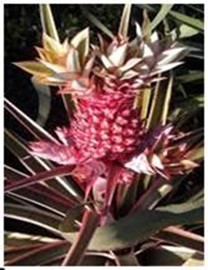
Scientific name: Amanas comosus National importance: provides Vitamin C
VARIETIES
o Smooth cayenne
o Natal Queen
o Ripley Queen
o Sugar leaf
ECOLOGY
Altitude 0 -2100m a.s.l
Rainfall: 1000mm per annual well distributed
PROPAGATION
Pineapples are propagated using three types of vegetative material
(i) crowns: There are obtained from the tops of the fruit
(ii) Suckers: There are leaves shoots arising below the fruit level but may originate from bellow
above soil surface
(iii) Slip: leaf shoots arising from the base of the fruits
Grown take longer (24 month); Sucks take 18 months and grow more uniform and slip nature 20-22 month. most farmers use suckers and they have to be spread out 1-2 weeks before planting
planting is done in double rows at the following spacing:
Between plant in rows :30cm
Between rows in bed:45-50cm
Between beds :90cm
CULTURAL PRACTISES
Weeding/Mulching: can be controlled by a combination of cultivation, mulching and herbicides however mulching using a layer of dried gases is best.
Stripping: This is the removal of all slips and unwanted suckers so as to leave only one sucker to prepare the plant for ratoon crop (i.e. subsequent fruits after first harvest).
Pest and Diseases
Insects: mealy bug (dysmicoccus brevipes) carries virus causing red or yellow colour to the leaves resulting to stunting growth.
Control: Difficult to control; but dip planting material in a solution of chlordane or heptachlor.
Nematode: Attacks the roots causing root knots and distorted growth.
Control: spray nematocides e.g. carbofuran (furadan) others: scale, mikes fruit flies e.t.c.
Diseases: Heat rot: caused by fungus phytophthora cinamomi: result to rotting of the fruit from the centre outwards.
Control: Soak planting material in difolatan fungicide and reapply 2-4 months after planting.
Harvesting
Pick pineapples when ripe, when the small leaves in the centre of the grown can be pulled out easily.
HANDLING AND PROCESSING OF CROP PRODUCTS.
Processing: This refers to any alteration on the proportion of agriculture products by physical/chemical/Biological measure; so as to be stored or consumed. It involves the presentation or manufacturing of agriculture products.
Handling: This refers to all care which is undertaken in processing agriculture products.
OBJECTIVES OF PROCESSING AGRICULTURE PRODUCES.
To preserve agriculture products for safe transport from producers to consumers.
To facilitate storage during time of surplus and therefore stabilizes supply of agriculture produce throughout the years.
To convert agricultural products into a form which is suitable for consumers to use since most of the product when harvested are raw product e.g. milk, cereals legumes etc.
CATEGORIES OF PROCESSING
i. Primary processing
ii. Secondary processing.
PRIMARY PROCESSING
This refers to processing activities which involve a slight charge of agricultural raw product. It includes:-
Cleaning: This is the removing of foreign material by winnowing e.g. maize.
Grading: This is the classifying of crop products by its size, quality, and shape, colour, small etc. e.g. Tobacco, Tea, coffee.
Crushing: This is a process of milling the product e.g. cereals the removal of outer cover e.g. cassava.
Peeling: The removal of outer covers e.g. cassava.
Winnowing: The process of separating grain from chaff and foreign matter e.g. removing husks from rice
Dehusking: The removal of husks e.g maize.
Drying: The act of reducing moisture control of grains.
Trashing: The separation of grain from cobs, pods, panicles etc e.g. maize, sorghums, legumes.
Curing: The process of drying leafy crop e.g. Tobacco, vegetables etc. Decortications: The separation of fibres from leaf covers e.g. sisal. Shelling: Removal of outmost cover from crop e.g. maize or legumes. PRIMARY
PROCESSING EQUIPMENT/MACHINE
o Coffee pulper sisal decorticators
o Groundnut Sheller sugar cane crushers
o Maize Sheller pyrethrum drier
o Burr mill hummer mill
o Sorghum threshers
o Secondary processing: baking, frying, cooking, extruding, blending, and fermenting, roasting;
o Packaging, marketing;
CROP STORAGE STRUCTURES
Storage concept: Consumption of food grains is regular is regular while production is seasonal; hence there is a need of storing food grain so as to have continuous supply of grains, thus reducing piece fluctuation.
These are various ways of grain storage by using different storage structures.
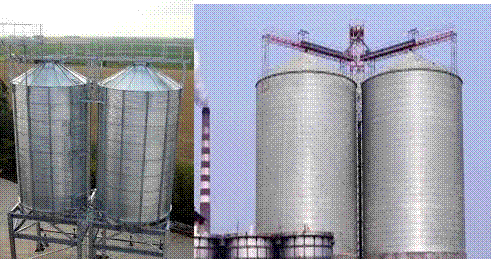
SILO-Is a very high narrow building on the earth surface or partially underground used for storing grains
Types:
Above ground silo
Underground silo (godown)
Construction material needs:
o Concrete materials
o Brick materials
o Wooden materials
o Metal materials
ADVANTAGE
o Can store grain for a long time
o Can store large quantities of grain
o No need of packing grains into containers as the grain is kept loose.
DISADVANTAGE
o Needs high skills in construction
o It is costly ( in construction)
o It is difficult to control pests and disease when there is an attack.
o In case of fire outbreak, large quantities of harvest are lost resulting to total loses.
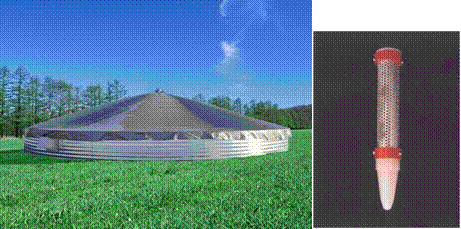 STORAGE BINS
STORAGE BINS
TNAU INSECT PROBE TRAP
These are short and broad large container with lead covers on its top side. They may be partially or wholly underground. Construction material used:
i. Metal (commonly used in large form
ii. Mud bin
iii. Brick bins (burnt or cement bricks)
iv. Wire mash bins
ADVANTAGE
i. Does not need skill and high cost during construction.
ii. Easy to control pest and disease outbreak due to easy applying.
iii. Grains are stored loosely and no need of containers.
DISADVANTAGE
i. They store small quantity of crop
ii. Storage is for short time
iii. In case of mud bin, it is difficult to control insert fungi and rodents as the structure cannot effectively be fumigated.
STORAGE WAREHOUSE
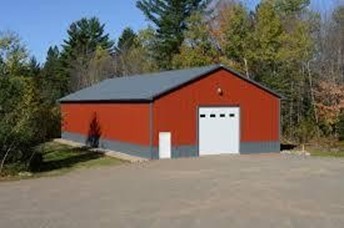
These are normal storage building constructed on the ground. They are market oriented usually organized by the government/cooperative societies.
ADVANTAGE
i. Can store different types of crop.
ii. Can store large quantities of products
iii. Easy to control pests and diseases
DISADVANTAGE
i. Disease spread is easy
ii. Stores crop for a short time 3-12 month only
iii. Needs containers e.g. suck or gunny bags as they cannot be stored loosely.
Granaries
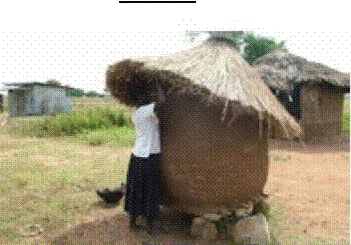
These are usually traditional stores to which crop are put fruit after harvest
They may be circular (diagram) or rectangular shaped and have forked wood supporting post levating above ground level.
The size of granaries varies according to the quantity of produce to be stored. Construction material used.
Post for building floor and walls
Thatch grass for roofing the granaries
Used to store loose grains in a woven basket, however un threshed products can also be tightly packed in granaries.
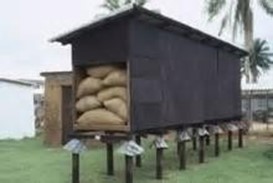
CRIBS -I s a constructed unit which is capable of drying grain while in cobs and thus reducing moisture content from 30% – 13% without explosive to the sun. The wall of the cribs has about 50% opening efficiency ventilation.
They crop harvest are kept in the crib for 2-3 months to dry before shelling and later shelled, winnowed, and seed dressed by chemical and packed in containers e.g. Gunny bags for longer storing.
